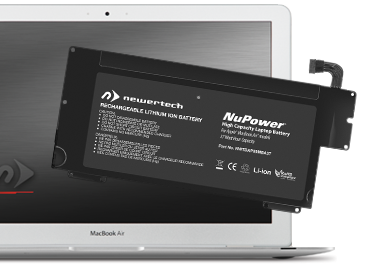

Honestly, that wasn't much of a concern before thanks to the lack of power, but now. We still found its resolution to be more than adequate for most tasks but just a bit limiting for anyone working on photos or doing anything where pixels really count. Contrast is helped by the glossy sheen here - and no, you still can't option out a matte unit. We spent our time testing the 13-incher and, as before, it continues to impress when it comes to contrast, brightness, and viewing angles, which are plenty wide enough to enable two-person, coach-class viewing of that latest episode of Top Gear. When it comes to displays nothing has changed: the 13-inch model features a 1440 x 900 glossy, LED-backlit panel while the 11 still does 1366 x 768. Intel HD 3000 graphics power the lot and stock processors include 1.6GHz and 1.7GHz Core i5's, though a 1.8GHz Core i7 is available for $100 more. SSDs are standard across the board, starting at 64GB for the 11 and going up to 256GB for the top-shelf 13-inch. On the memory front, 4GB of DDR3 memory is found on all but the base 11-inch model, which gets by with half that. The backlit keyboard is nice, and the addition of Thunderbolt could be a boon in 12 months or so, but its the new selection of processors that really turn the Air into a serious machine, as you'll see when we talk benchmarks in a bit. Step inside the case and you'll find the most important changes here: new Intel Core i5 and i7 ULV processors.

Like before, the omission of these ports leaves the Air free to pinch down to a delicious taper beneath the keyboard, thin enough to make for a decent cleaver when no proper blade can be found - or when you just can't be bothered to find one.


All other ports have been deemed unnecessary by Apple's designers and therefore relegated to myriad USB adapters for things like Ethernet - though if you start relying on those you'll likely need to start packing a USB hub as well. On the left you'll find a 3.5mm headphone jack, the MagSafe power connector and. The 11-inch model is likewise emblazoned, but sadly has still not been granted an SD reader, something restricted to the bigger 13. This 10Gb/sec interconnect has become standard fare on all new machines coming out of Cupertino, a fact that should help to accelerate the so-far tardy uptake in support from accessory manufacturers. On the 13-inch model you'll still have to make do with but one USB port on the left and one on the right, but now that latter one is flanked by a Thunderbolt connector, Apple's implementation of Intel's Light Peak standard. The outside of this 2011 refresh of the MacBook Air is virtually indistinguishable from that which came before it.


 0 kommentar(er)
0 kommentar(er)
